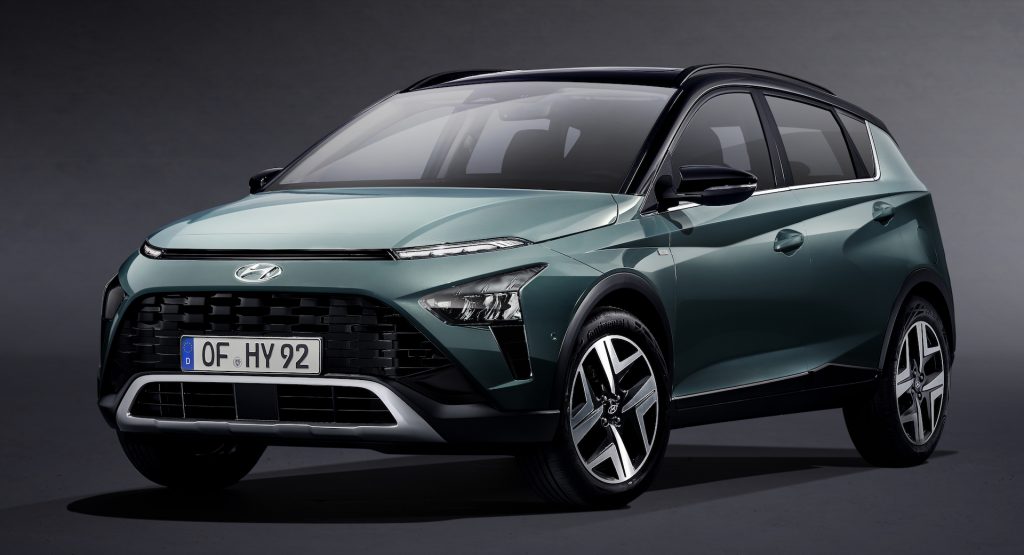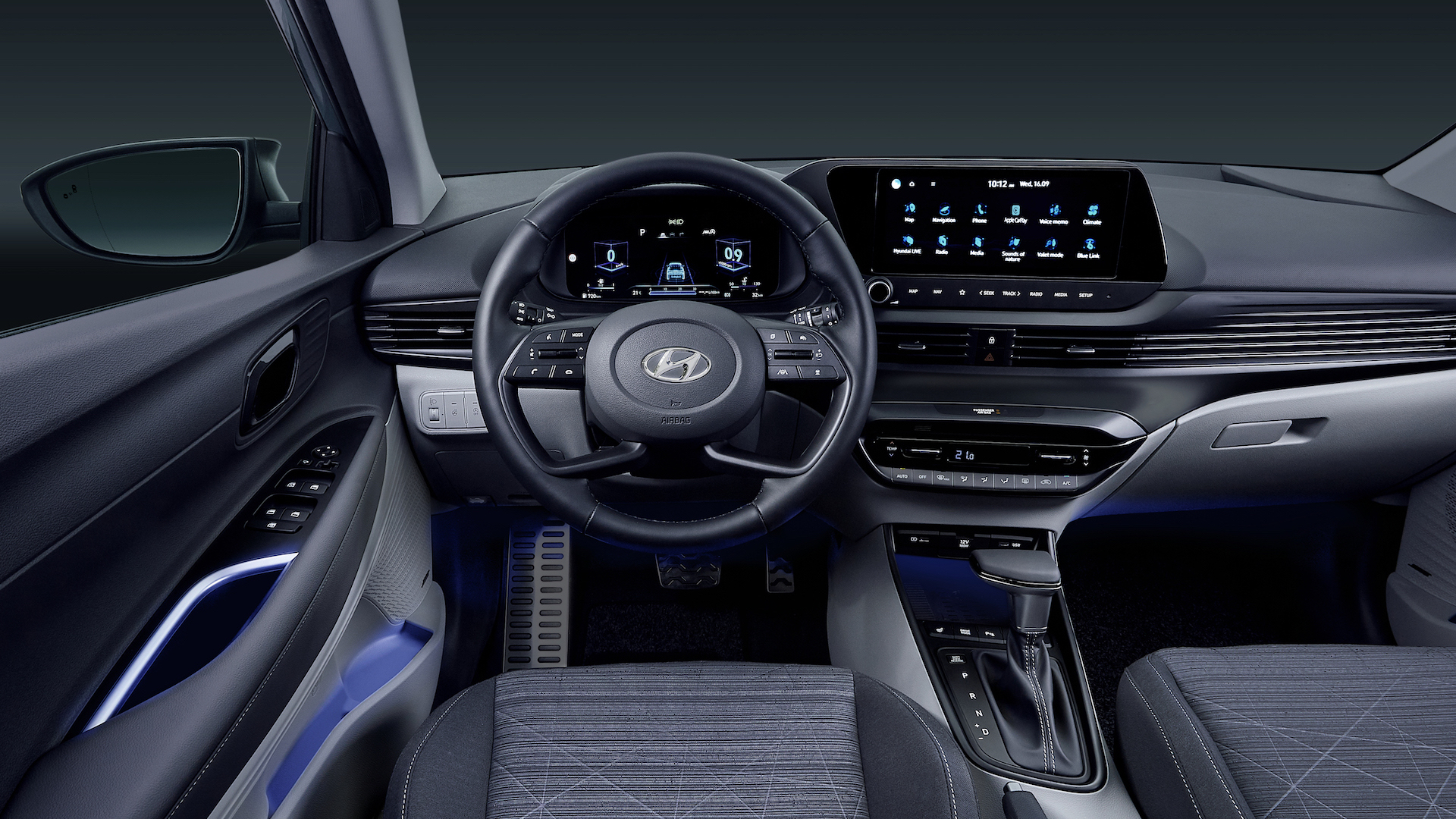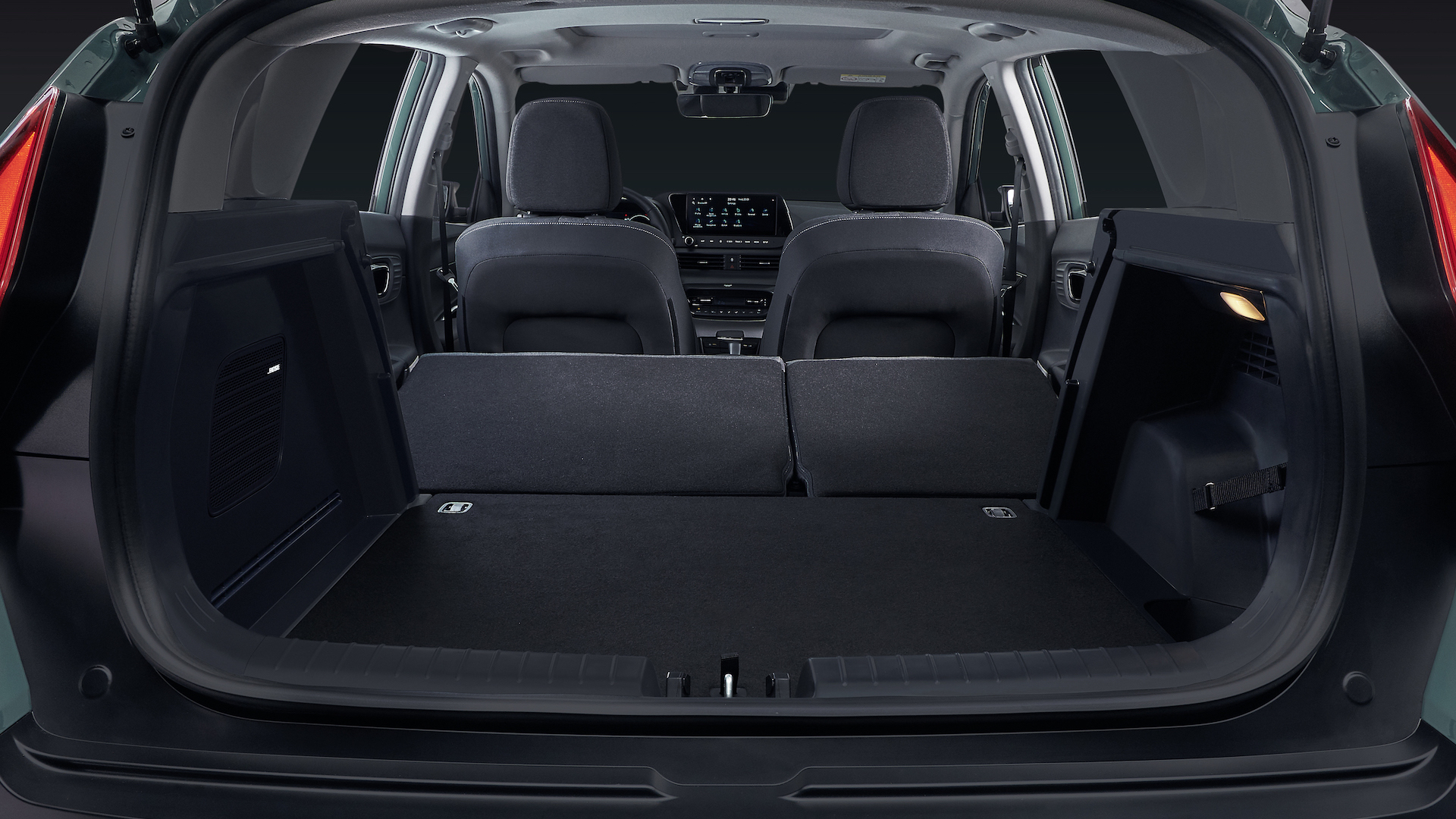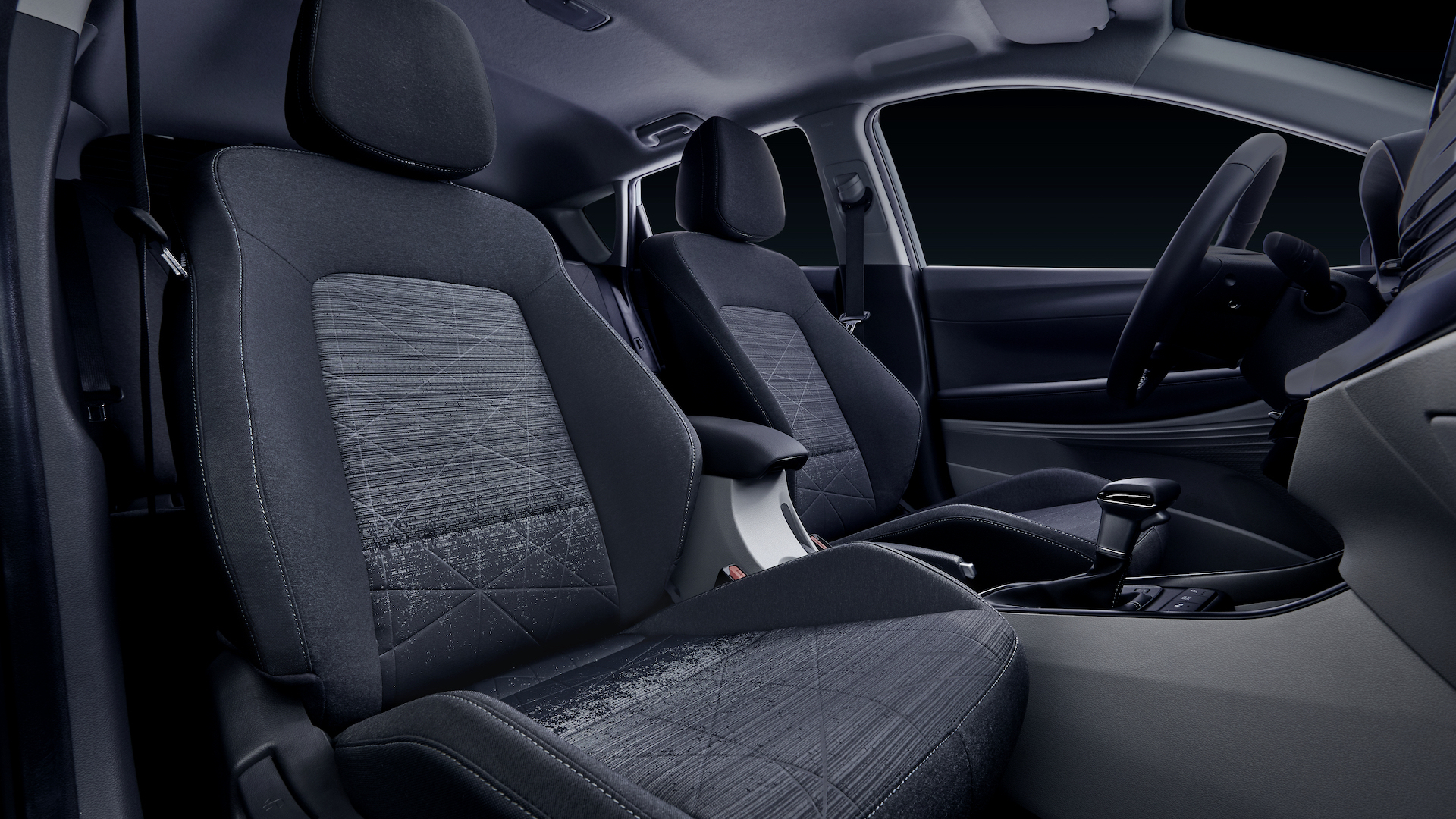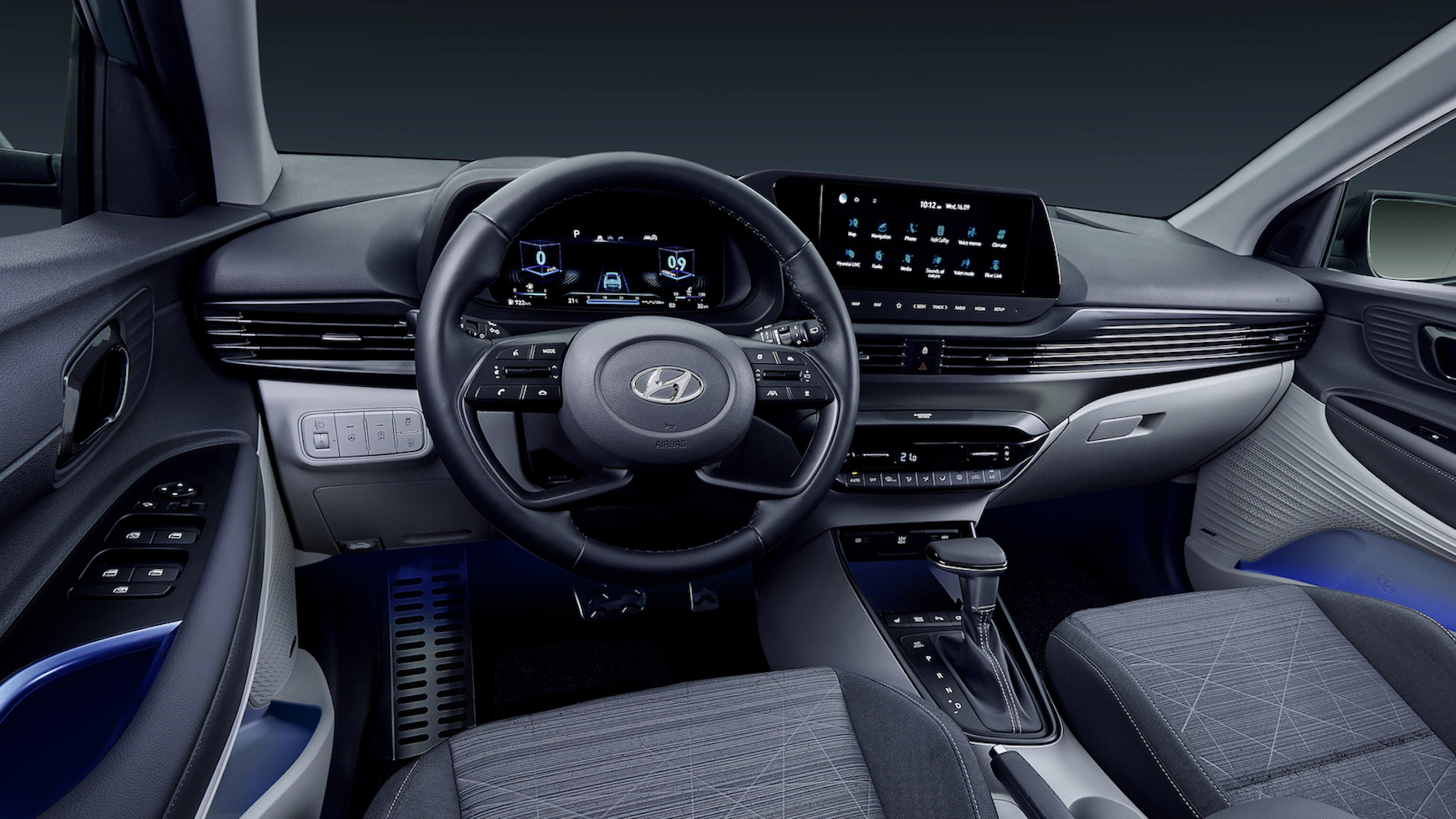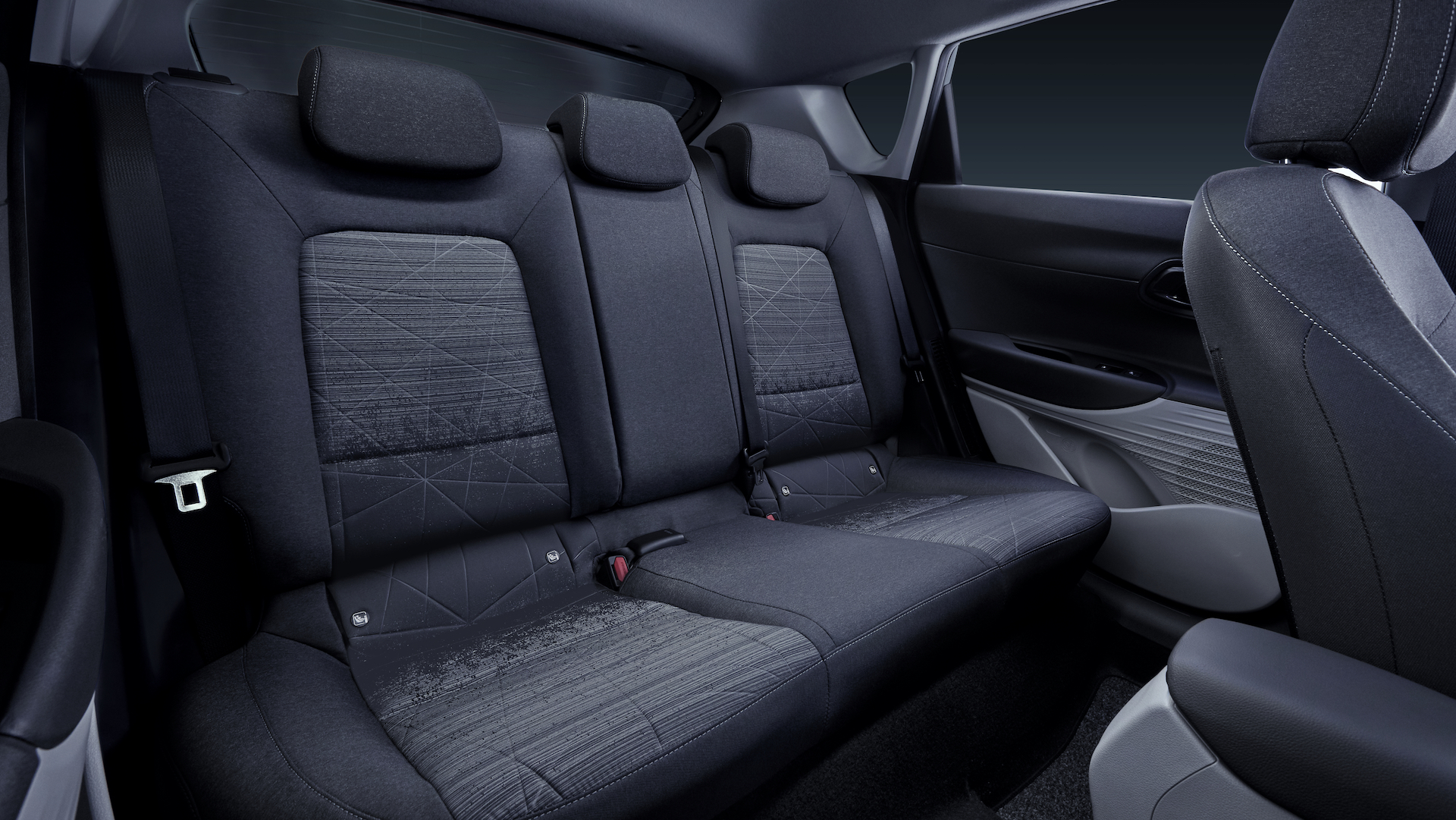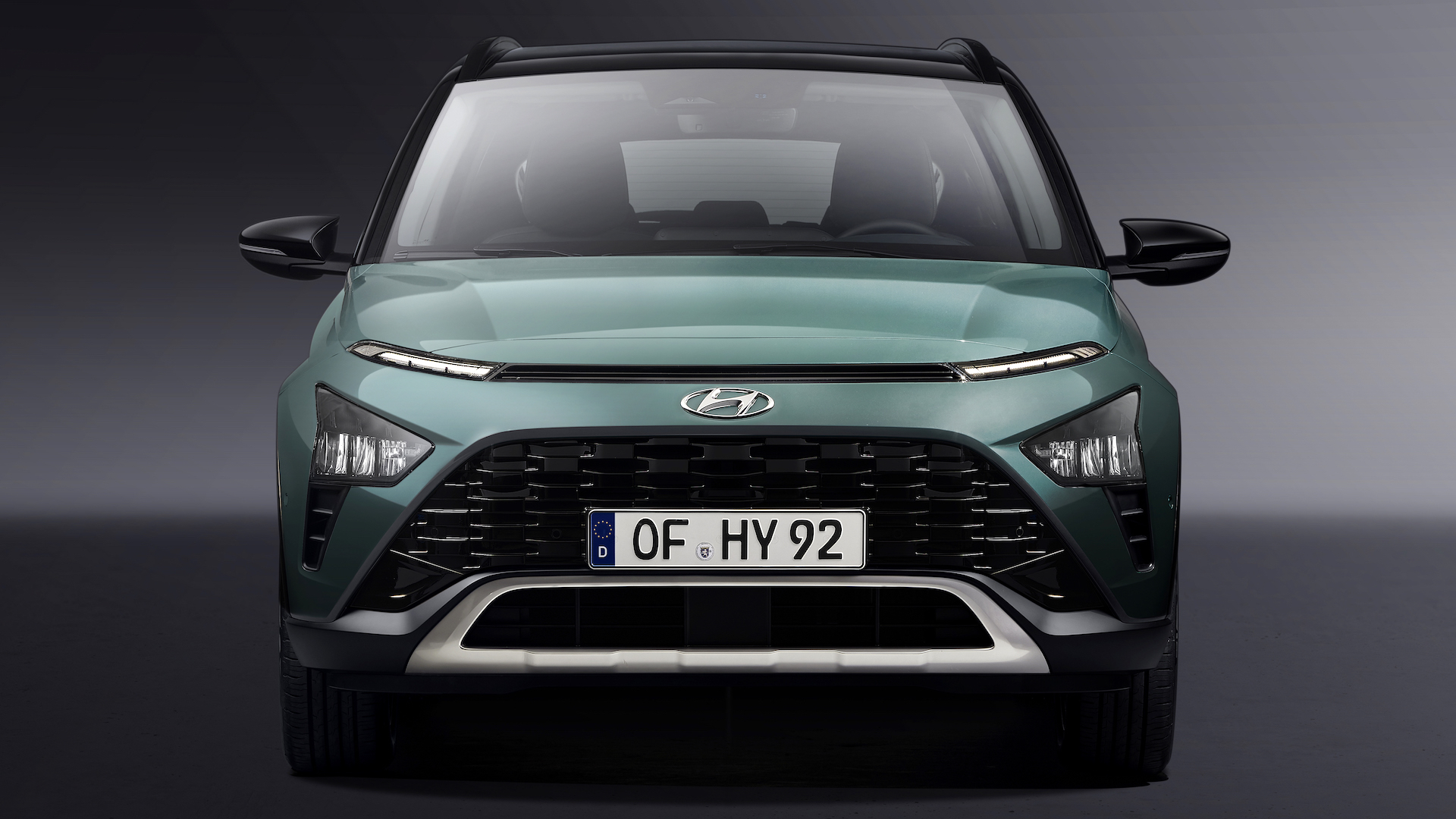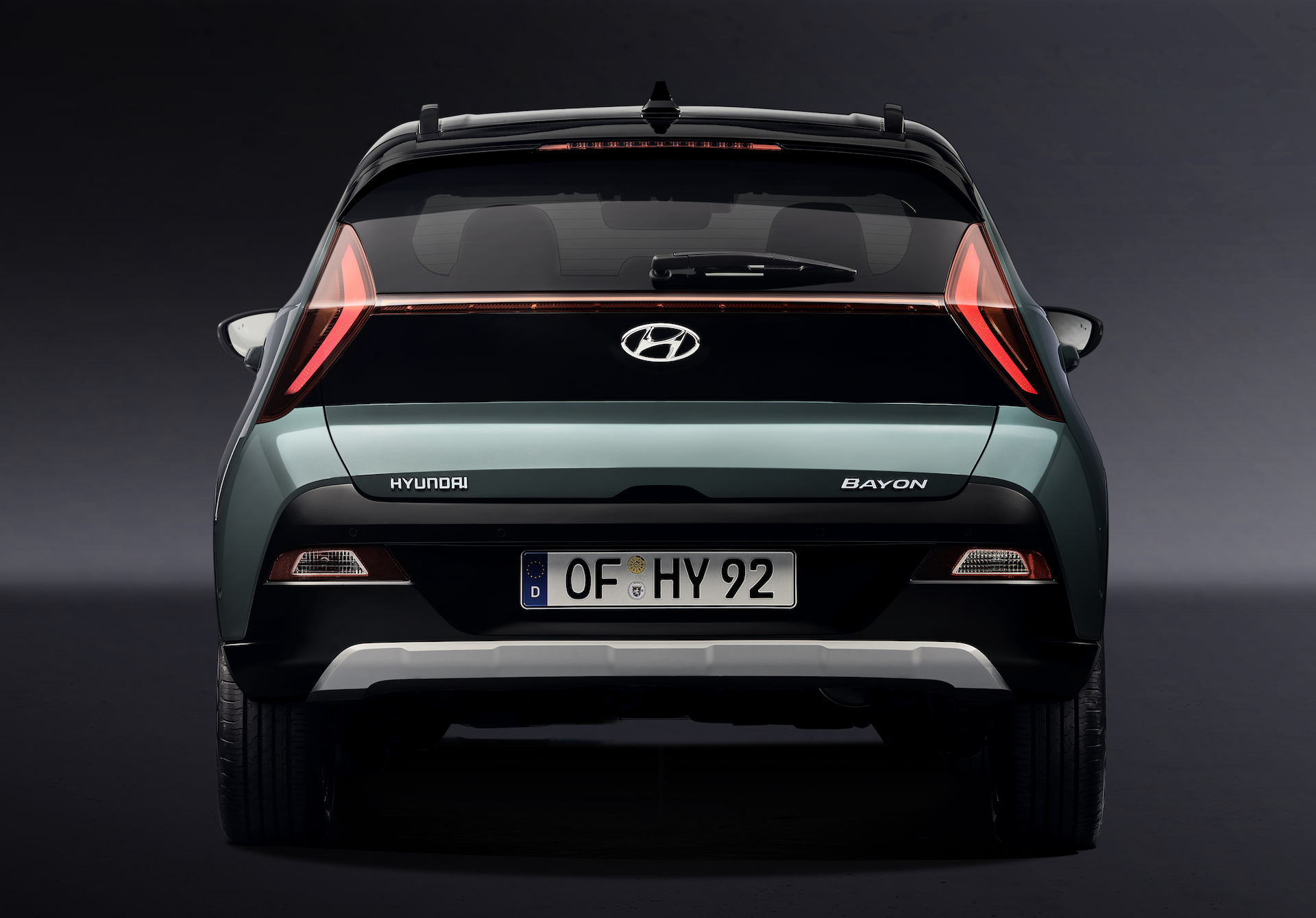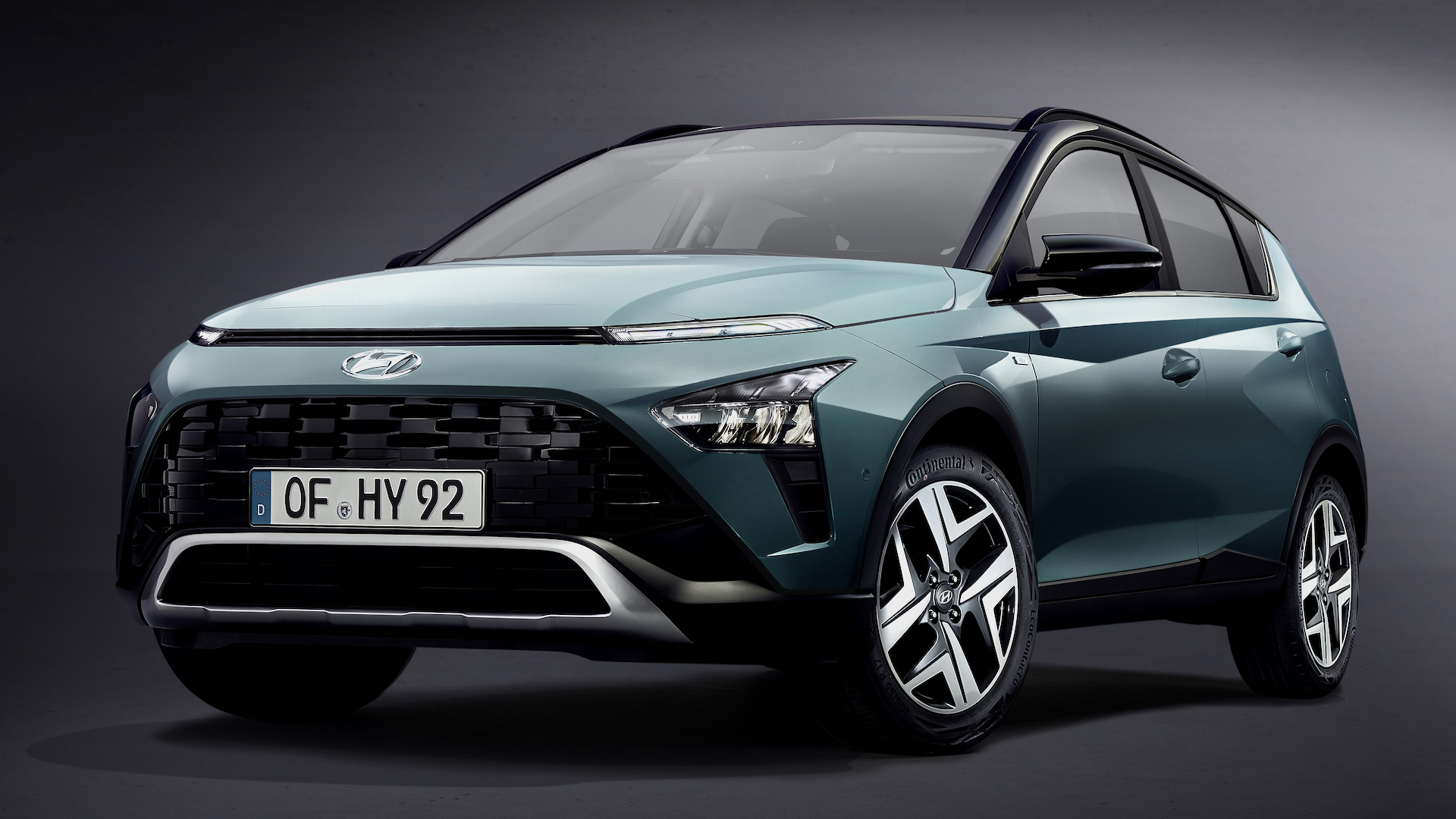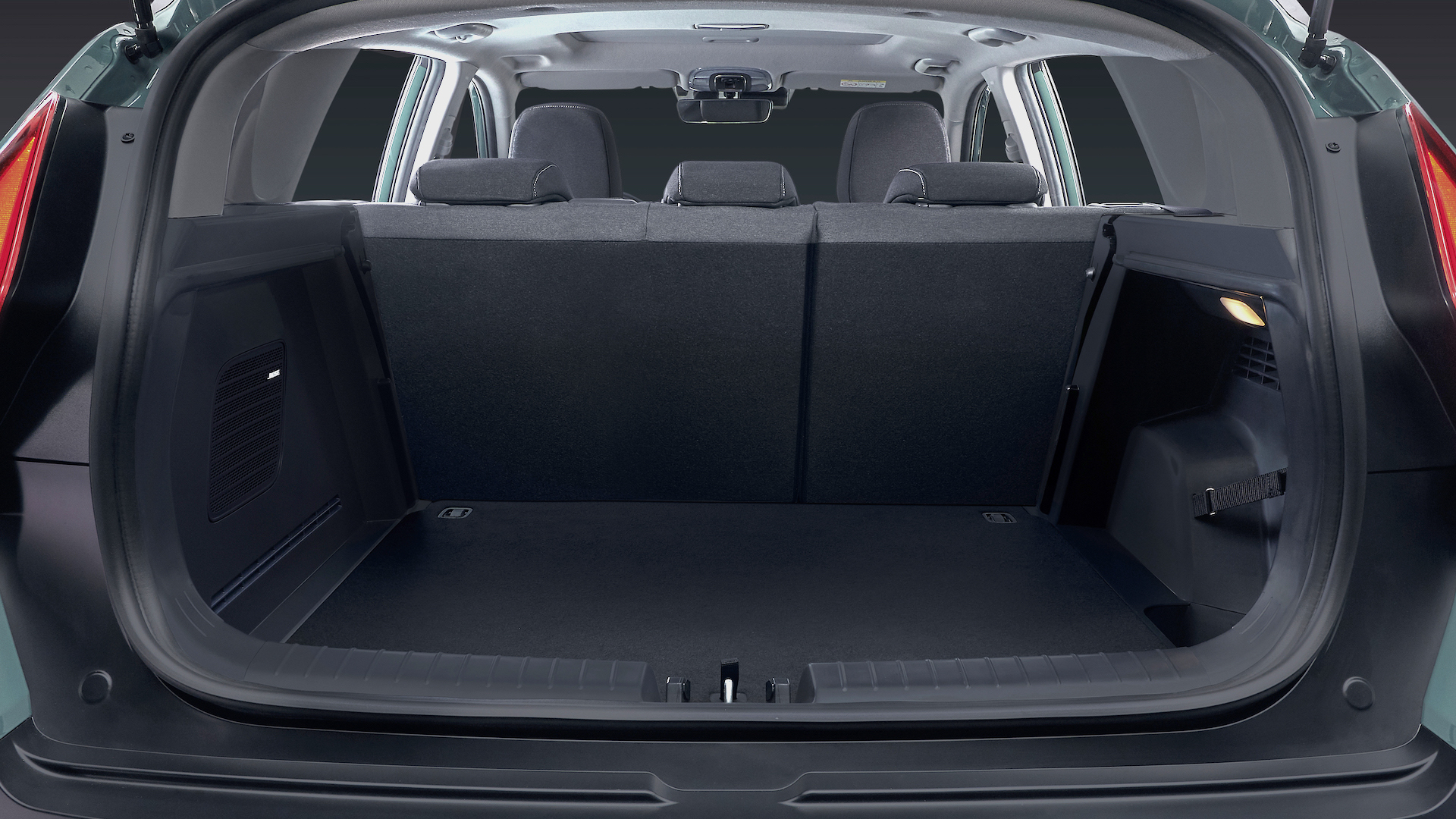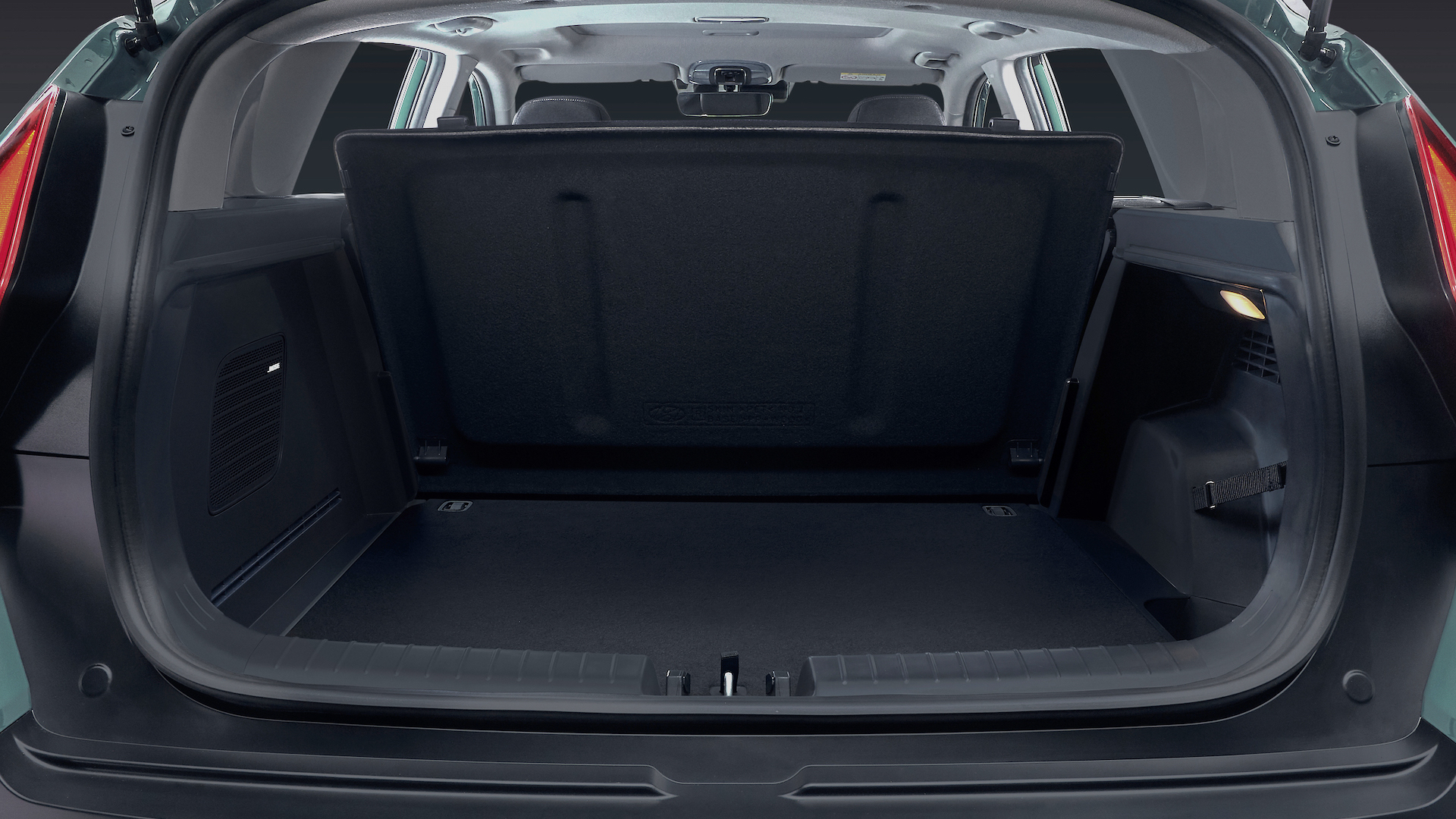We’ve already seen its bold front and rear lights in a couple of teaser shots, but now the covers are fully off Hyundai’s supermini-based Bayon crossover.
This high-riding B-segment hatch has been designed to take on cars like the Ford Puma, Volkswagen T-Cross and Nissan Juke, and is expected to cost from around £17,000 (equal to €23,500) when it lands in showrooms this summer. That’s compared to the similarly sized Kona’s £21,060 starting price in the UK.
The name – pronounced Bye-Onn – comes from the capital of France’s picturesque Basque Country and was chosen to reflect that this Hyundai was designed specifically with the European market in mind. If you’re hoping to pick one up at your local Hyundai dealer in Texas you’re going to be disappointed as it won’t be offered in the US.
Also Read: New Hyundai Bayon Small Crossover Teaser Reveals March 2 Unveiling Date
And it won’t be venturing off-road either, at least not intentionally. Strip away the raised ride height, practical black wheelarch lips and tough-looking front skid-plate and you’re left with a conventional supermini, but one that offers a little more interior headroom and luggage space (411 liters). Measuring 4,180mm (164.6 in.) long and 1,775mm (69.9 in.) wide with a 2,580mm (101.6 in.) wheelbase, the Bayon is based on Hyundai’s small i20 hatchback and isn’t offered with four-wheel drive.
But Hyundai has worked hard to disguise those origins, integrating some of the bigger Kona’s styling cues to give the Bayon a much more assertive look. Most obvious are the wafer-thin DRLs separating the hood from the bumper below, while those arrow-shaped headlights are echoed in the lamps at the rear.
The interior, on the other hand, is lifted almost directly from the i20, but that’s not necessarily a bad thing. All versions come with a 10.25-inch digital instrument pack mounted behind the steering wheel that’s mated to one of two touchscreens on the top of the dashboard: a basic 8-inch version or a 10.25-inch alternative that includes navigation.
Bayon buyers get to choose from two versions of the same 1.0-litre three-cylinder tubocharged engine. The base option produces 98bhp (100PS) and 127lb ft (172Nm), while its bigger brother bumps power up to 118bhp (120PS), though torque remains the same.
Both engines get 48v mild hybrid assistance and come standard with a six-speed manual transmission that even has rev-matching downshift software, or you can upgrade to a seven-speed DCT.
Strangely, there’s very little difference in performance: the 98bhp manual gets to 62mph in 10.7sec, but the 118bhp car is only 0.4sec quicker. Even stranger, pair the DCT ‘box with the base engine and it’ll cost you an entire second in the run to 62mph versus the six-speed car, the two-pedal model needing 11.7sec to reach the marker.




